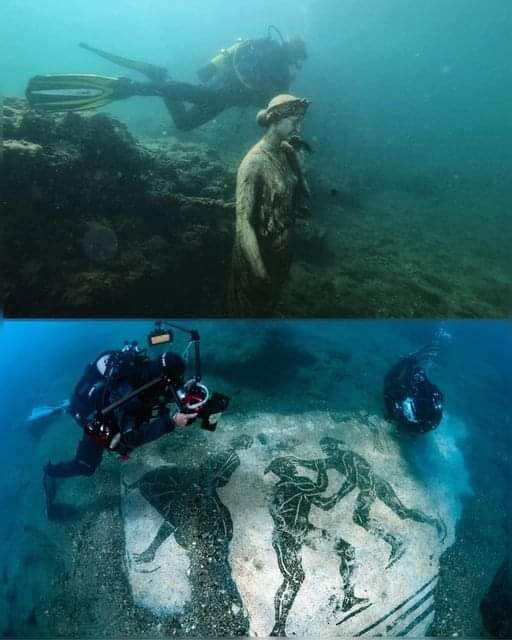Baiae – A Jewel of Roman Luxury
Baiae, once a glittering resort on the northwest shore of the Gulf of Naples, was the epitome of Roman opulence and indulgence. It stood as a retreat for the empire’s elite, blending architectural grandeur with natural beauty. Emperors like Nero, Julius Caesar, and Hadrian were frequent visitors, drawn by its reputation as a haven for relaxation, scandal, and intrigue.
The Allure of Baiae
Baiae’s fame stemmed from its natural geothermal hot springs, which were believed to have healing properties. Roman architects capitalized on this natural resource to create luxurious thermal baths, which became a centerpiece of the city’s allure.
The resort was more than just a spa town—it was a symbol of wealth and power. Sprawling villas adorned with intricate mosaics, marble statues, and breathtaking views dotted its coastline. These estates, owned by Rome’s most influential figures, were places of not only leisure but also political maneuvering and excess.

A City of Scandal and Decadence
Baiae earned a reputation as a “Sin City” of the Roman world. Tales of debauchery, corruption, and excess defined its legacy. Feasts, illicit affairs, and conspiracies thrived in its opulent settings, reflecting the darker side of Roman aristocracy. For many, it was a playground of pleasure, while for others, it symbolized the moral decline of the empire.
The Geology Behind Baiae’s Rise and Fall
While Baiae’s prosperity was closely tied to its volcanic activity, this very force would seal its fate. The region lies in the Campi Flegrei, a large volcanic area known for its instability. The phenomenon of bradyseism, where land rises or sinks due to underground magma movement, caused the gradual submergence of Baiae over centuries.

Bradyseism – The Silent Threat
Bradyseism is a slow and often imperceptible process, but its impact on Baiae was profound. As the ground sank, parts of the city were swallowed by the sea. By the 8th century CE, much of Baiae had vanished beneath the waves, leaving behind a hauntingly beautiful underwater city.
Baiae Today – A Window into the Past
The ruins of Baiae now lie beneath the Gulf of Naples, forming one of the world’s most fascinating underwater archaeological parks. Divers and researchers have uncovered well-preserved mosaics, statues, and remnants of Roman engineering. These submerged treasures offer a glimpse into the grandeur of the ancient city.
For those who cannot dive, glass-bottom boats provide an opportunity to marvel at the sunken villas and their intricate designs. Baiae’s underwater park serves as a testament to Roman ingenuity and a poignant reminder of nature’s power to reclaim even the most splendid creations of humanity.

Lessons from Baiae’s Legacy
Baiae stands as a powerful symbol of human ambition, creativity, and excess. Its rise and fall remind us of the fragility of even the most advanced civilizations in the face of natural forces. Today, Baiae’s ruins, both above and below water, inspire awe and curiosity, ensuring its legacy as one of history’s most intriguing lost cities.
